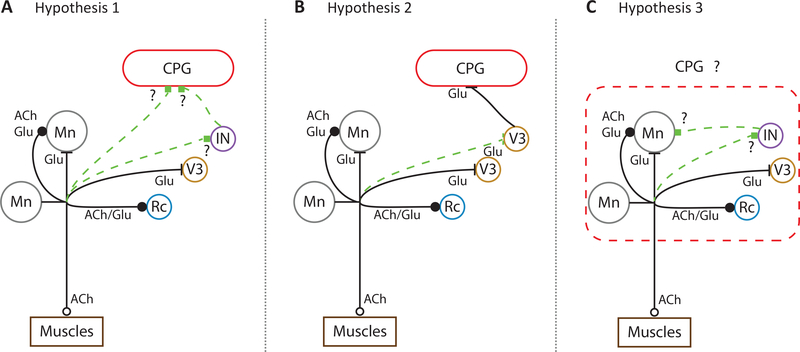Figure 2.
Hypothesized connections of motoneurons to the CPG in neonatal mice. Circles represent neurons: motoneurons (Mn), Renshaw Cell (Rc), V3 interneurons (V3) and an unknown interneuronal population (IN). Each axon has been labeled with their known transmitter(s): acetylcholine (ACh) and glutamate (Glu). Motoneuronal to motoneuronal connections show 2 axon collaterals to encompass different results in the literature [17,21•]. (a) Hypothesis 1. Motoneurons connect to the CPG either directly or through a projection to an unidentified interneuron (IN). (b) Hypothesis 2. V3 interneurons have been shown to receive monosynaptic inputs from motoneurons [29••] and to modulate the CPG [32]. Here we hypothesized that the ability of motoneurons to trigger locomotor-like activity and target the CPG is mediated through this pathway. (c) Hypothesis 3. Motoneurons and the CPG are traditionally seen as separate modules. In this schematic, we hypothesize that motoneurons are part of the CPG and that they might be playing a crucial role in activating and generating locomotion.

